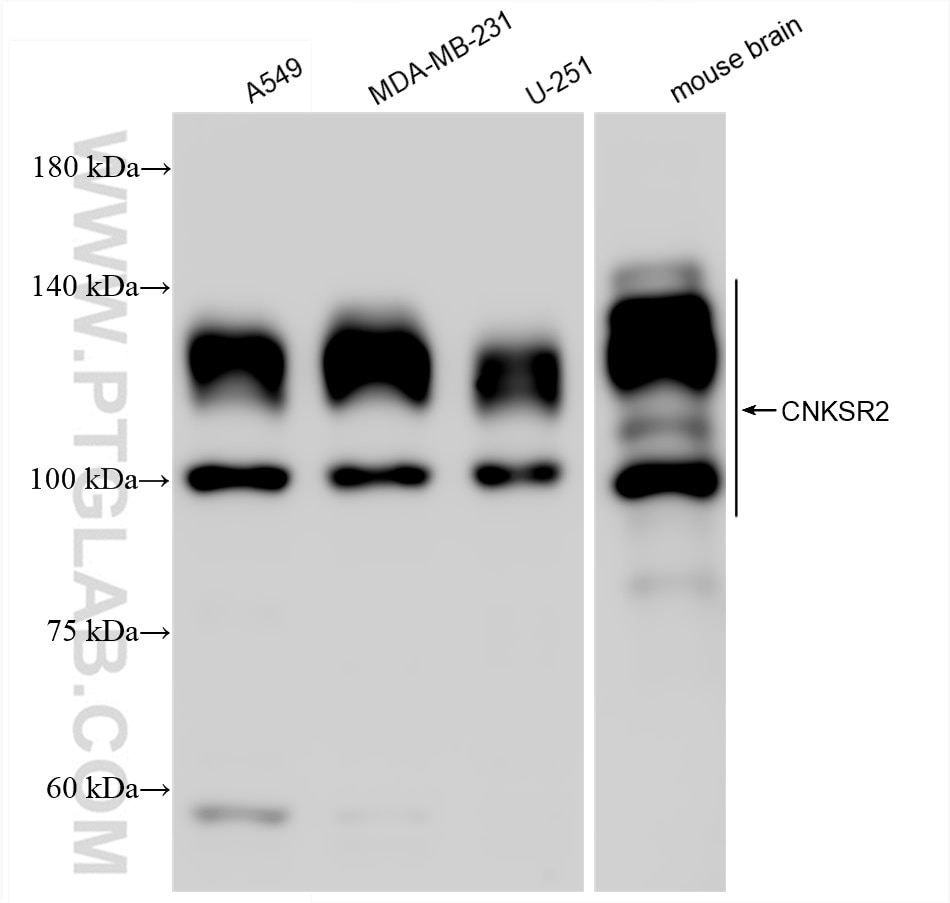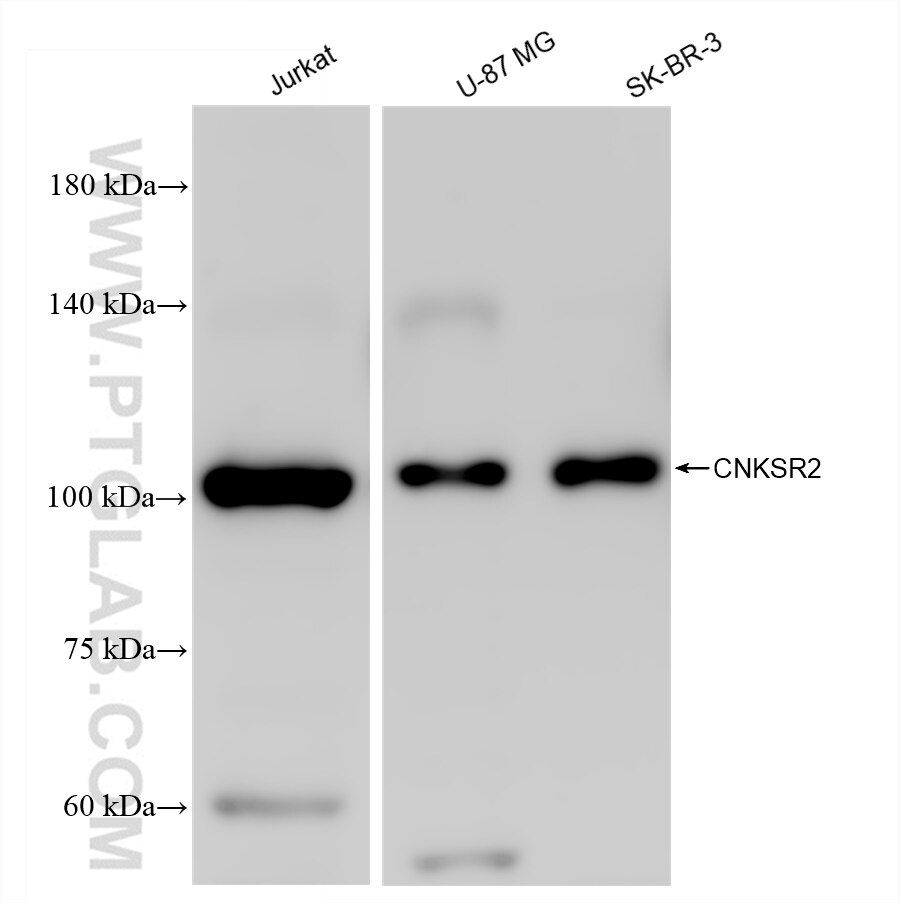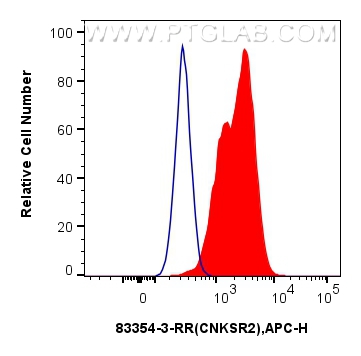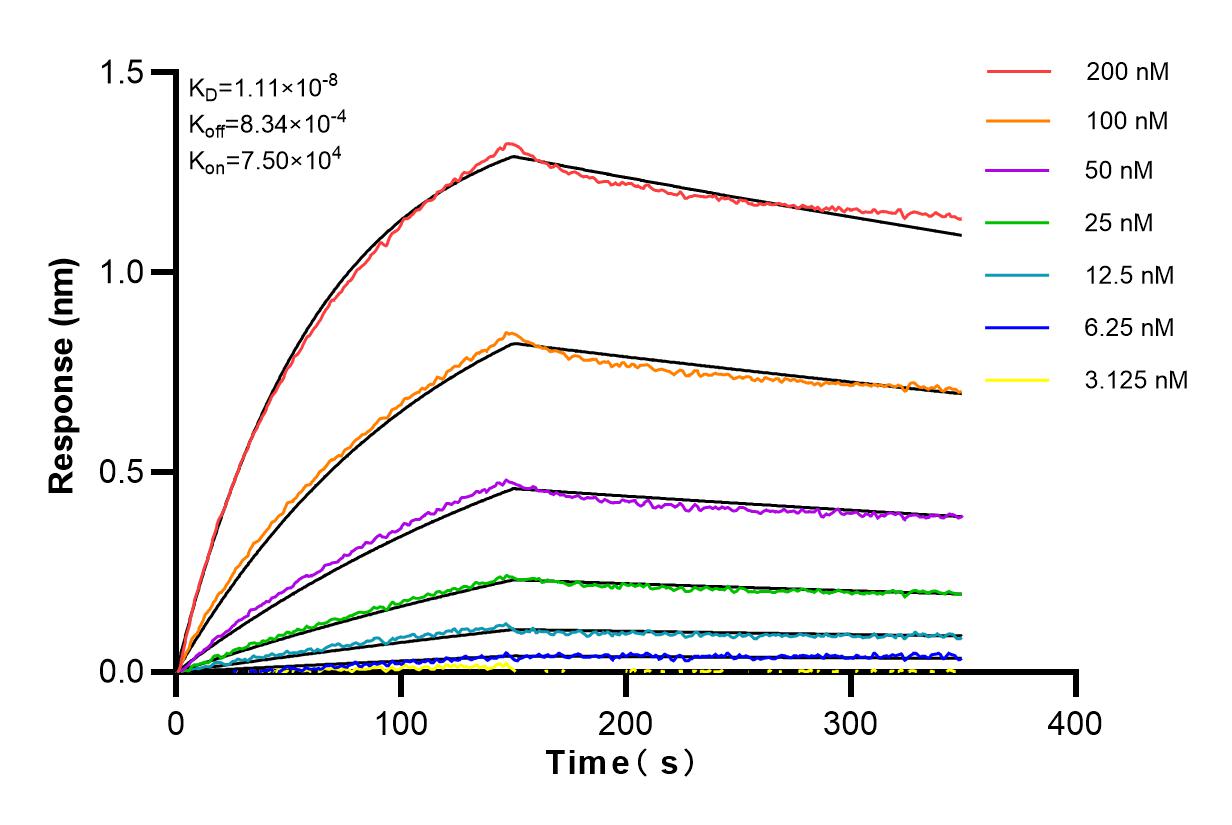Tested Applications
| Positive WB detected in | A549 cells, Jurkat cells, MDA-MB-231 cells, U-251 cells, mouse brain tissue, U-87 MG cellls, SK-BR-3 cells |
| Positive FC (Intra) detected in | Jurkat cells |
Recommended dilution
| Application | Dilution |
|---|---|
| Western Blot (WB) | WB : 1:2000-1:10000 |
| Flow Cytometry (FC) (INTRA) | FC (INTRA) : 0.25 ug per 10^6 cells in a 100 µl suspension |
| It is recommended that this reagent should be titrated in each testing system to obtain optimal results. | |
| Sample-dependent, Check data in validation data gallery. | |
Product Information
83354-3-RR targets CNKSR2 in WB, FC (Intra), ELISA applications and shows reactivity with human, mouse samples.
| Tested Reactivity | human, mouse |
| Host / Isotype | Rabbit / IgG |
| Class | Recombinant |
| Type | Antibody |
| Immunogen | CNKSR2 fusion protein Ag21174 Predict reactive species |
| Full Name | connector enhancer of kinase suppressor of Ras 2 |
| Calculated Molecular Weight | 1034 aa, 118 kDa |
| Observed Molecular Weight | 118 kDa, 102 kDa |
| GenBank Accession Number | BC126121 |
| Gene Symbol | CNKSR2 |
| Gene ID (NCBI) | 22866 |
| RRID | AB_3671011 |
| Conjugate | Unconjugated |
| Form | Liquid |
| Purification Method | Protein A purification |
| UNIPROT ID | Q8WXI2 |
| Storage Buffer | PBS with 0.02% sodium azide and 50% glycerol , pH 7.3 |
| Storage Conditions | Store at -20°C. Stable for one year after shipment. Aliquoting is unnecessary for -20oC storage. 20ul sizes contain 0.1% BSA. |
Background Information
CNKSR2 is a multidomain protein that functions as a scaffold protein to mediate the mitogen-activated protein kinase pathways downstream from Ras. This gene product is induced by vitamin D and inhibits apoptosis in certain cancer cells. It may also play a role in ternary complex assembly of synaptic proteins at the postsynaptic membrane and coupling of signal transduction to membrane/cytoskeletal remodeling.
Protocols
| Product Specific Protocols | |
|---|---|
| WB protocol for CNKSR2 antibody 83354-3-RR | Download protocol |
| Standard Protocols | |
|---|---|
| Click here to view our Standard Protocols |









